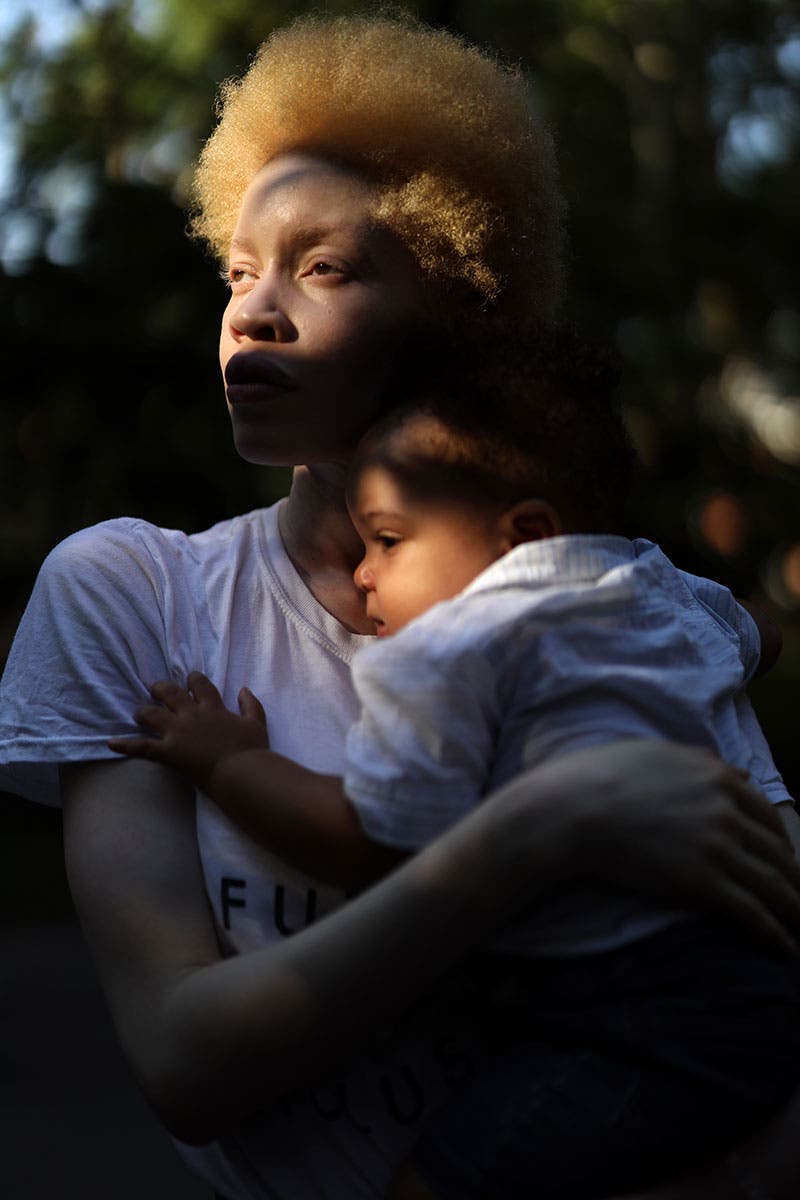Recently, I was given the opportunity to collaborate with Adorama to take the long-awaited full frame mirrorless system — the Canon EOS R (camera and lenses) — out for a test run. Like many of you, I’d been eagerly anticipating this update to my go-to my kit and, I have to say, I was not disappointed in what Canon brought to the table in this camera.
For the shoot, I reconnected with the impossibly gorgeous Diandra Forrest, a model who I met while on assignment for National Geographic in 2016. Diandra was featured in the lead photograph for my National Geographic story on albinism (a rare genetic condition where there is little to no pigment in the skin, hair and eyes). I’d been eager to spend time photographing her again because she’s a lovely person and we both care a lot about the issue of albinism, as it is a trait my children share. While our National Geographic shoot went great, I did struggle in one situation and thought it’d be the perfect situation to recreate for this camera test.
You see, at one point I was photographing Diandra in a dimly lit restaurant near Times Square. Not wanting to disrupt the mood at the time, I chose not to use a flash, but my DSLR was limited. So I struggled with the light and shot sparingly, ultimately preferring to wait for another situation to best capture her story. That’s right, I missed sat out several moments because of gear limitations. An anxiety-inducing situation to be sure.



With this in the back of my mind, I decided to take Diandra and her family members to a restaurant with lighting not unlike the one we visited in 2016, for a do over with the new mirrorless system I’ve been hearing so much about. We sat in the very back, where there was only soft overhead incandescent lighting, and as they enjoyed some light fare and I experimented with the camera.
Simply put: I’ve never experienced such stunning optics on a camera before. Images made at 25,000 – 40,000 ISO (which incredibly can be expanded to 102,000) looked as if they’d been shoot with an ISO 400 with my DSLR. While Diandra’s two children moved around restlessly in her arms in this difficult light — normally a most challenging situation — the camera allowed me to capture moments in sharp, detailed images, where even individual hairs on their heads could be distinguished. And as the shoot went on, I programmed the control ring, conveniently located at the edge of the lens along the tips of my fingers, to adjust the aperture settings, which is an undeniably smoother way to change depth of field mid-shoot. Wow.



After an hour with the camera, I decided that, for my shooting style, the “Multifunction Touch Bar” would be most helpful as a way to quickly adjust the ISO, especially in a situation where a subject is quickly moving from one lighting condition to another. While these new controls take some time to adjust to, it’s clear that Canon prioritized this camera system to be operated without looking up from the EVF. As a documentary photographer driven by the decisive moment, every moment I can spend giving total attention to my subjects and their surroundings, and not camera mechanics, is priceless.



Another feature I am absolutely thrilled to apply regularly in my work is the silent shutter option. The audible click of the camera regularly draws unwanted attention to me in types of sensitive situations in which I work. I’ve always just felt, as we all do, that this was just something that came with the territory. Cameras make noise. But no more. The EOS R replaced the “click” with a silent white rectangle that fills the electronic viewfinder when an image is made. It is so completely silent, it took me a few shots and looking on the back of the camera to believe that it indeed made the frames intended! This is going to be one of those updates that, looking back, we’re all going to wonder how we lived without for so long.


I’m thankful that the company also offers three adapters so that long-time Canon shooters like myself can still use their EF and EF-S lenses should they prefer. However, I very much enjoyed the RF 24–105mm F4 L IS USM and RF 50mm F1.2 L USM lenses that I used for this shoot.
Given my way of working, the EOS R’s 30.3 megapixels, low light capabilities and silent shutter make it an obvious choice for my kit — so much so that I ordered one today! I am sure may other documentary photographers will enjoy these facets as well.





